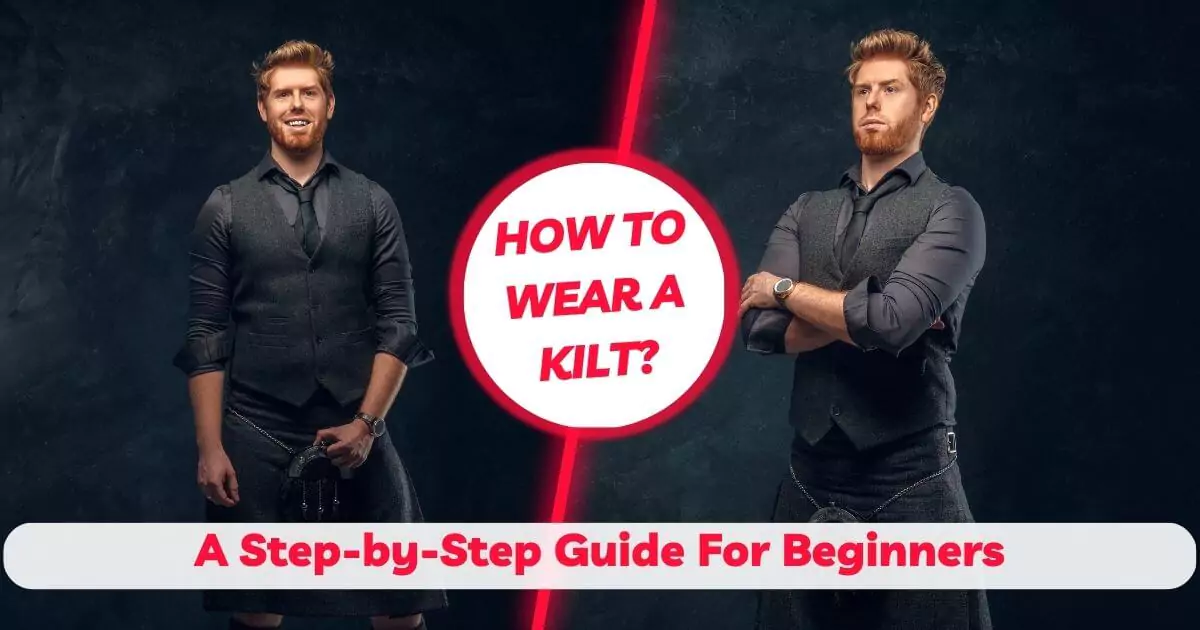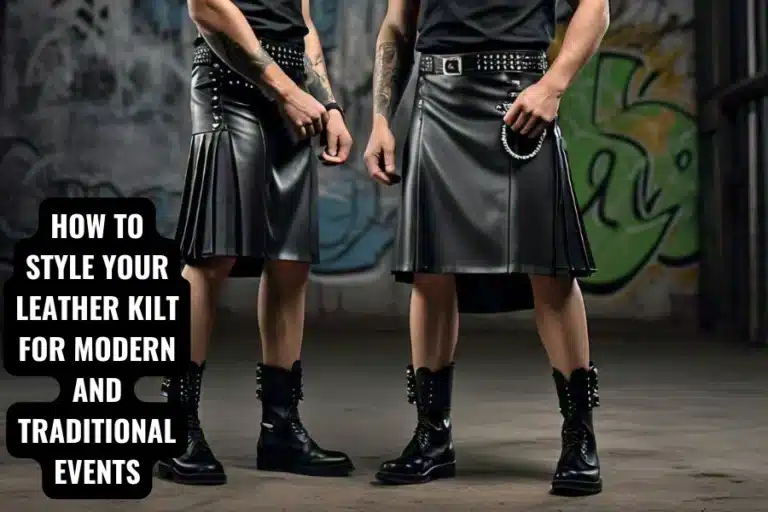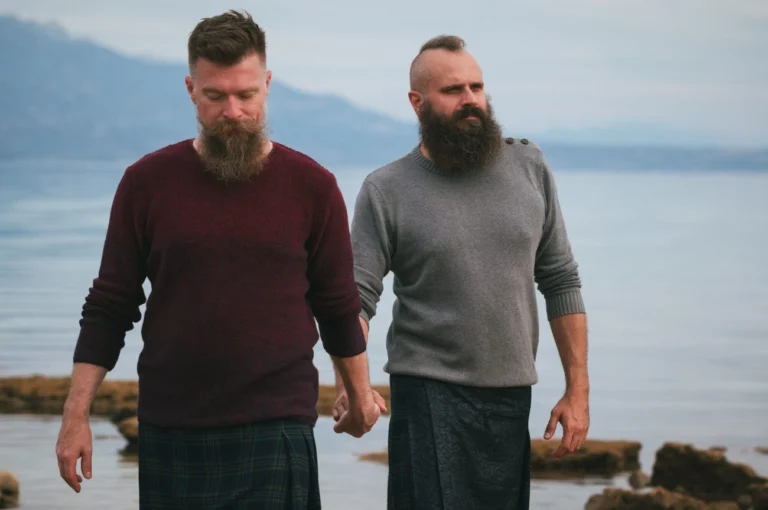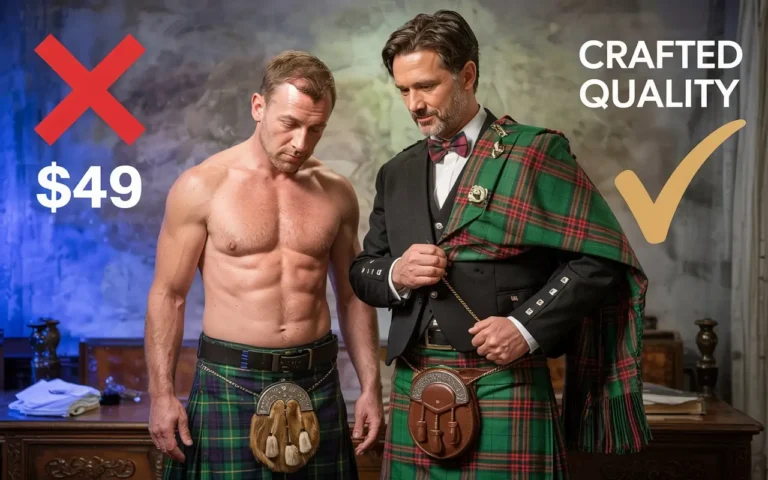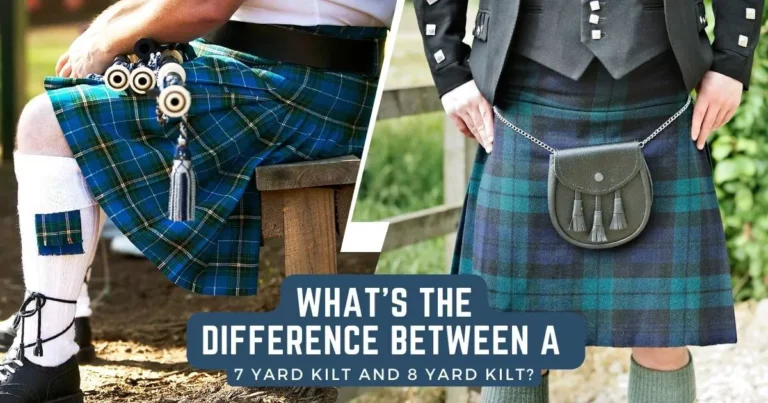How To Wear A Kilt: A Step-By-Step Guide For Beginners
The kilt is a traditional Scottish garment that has been worn for centuries. Originally designed as a practical garment for men working in the Scottish Highlands, the kilt has evolved into a symbol of Scottish heritage and cultural identity.Understanding how to wear a kilt properly is crucial whether you’re going to a Scottish wedding, a Highland Games event, or you just want to add a little Scottish flair to your wardrobe. We’ll explain to you the correct way to put on the custom kilt.
Steps To How To Wear A Kilt Properly:
Putting on the kilt is an art form in itself, and it’s important to do it properly to ensure a comfortable and stylish fit. Here, we’ll guide you through the process of putting on a kilt, step by step.
Step 1. Preparing For The Kilt:
Before putting on the kilt, it’s important to prepare your body. Start by wearing a comfortable shirt and underwear that won’t bunch up or create lumps under the kilt. You may also want to wear a kilt belt or sporran to keep the kilt securely in place. If you’re wearing a jacket, put it on before the kilt to avoid any awkward bunching or wrinkling.
Step 2. Folding The Kilt:
Next, lay out the kilt on a flat surface, with the pleats facing up. Fold the top half of the kilt down to create a waistband, and then fold the bottom half of the kilt up over your shoulder. This will make it easier to put the kilt on and adjust it later.
Step 3. Fastening The Kilt:
With the kilt still folded, place the waistband around your waist, ensuring that the aprons at the front and back are equal in length. Fasten the kilt with the buckle, ensuring that it’s tight enough to stay in place but not so tight that it restricts your movement or breathing. Some kilts have leather straps called “straps and buckles” that you can adjust for a perfect fit.
Step 4. Adjusting The Kilt:
Now that the kilt is fastened, it’s time to adjust the pleats and aprons for a neat and flattering fit. Start by adjusting the aprons so that they hang evenly and cover the tops of your knees. Next, adjust the pleats so that they lie flat and evenly spaced across the back of the kilt. Some kilts have a “fringe” at the bottom that should be left loose and not tucked in.
Accessorizing The Kilt: The Perfect Finishing Touches
Wearing a kilt is a unique and fashionable experience, but it’s the accessories that complete the outfit. From the sporran to the shoes, accessorizing your kilt is essential for a stylish and authentic Scottish look. This guide will take you through the top accessories to complete your kilt outfit, as well as how to wear and choose the right accessories.
Custom Sporran:
The custom sporran is a small pouch worn at the front of the kilt, serving a practical purpose as well as a fashionable one. When choosing a sporran, consider the occasion and the style of your kilt. A formal event may require a more ornate sporran, while a casual event may be better suited for a simple leather sporran. Make sure it complements the color and style of your kilt.
To wear a sporran, it should be placed just above the front apron of the kilt, about four inches below the waistline. The chain of the sporran should be draped across the kilt, with the sporran hanging down in front.
Belt And Buckle:
A belt and buckle is a practical accessories that can also add some flair to your outfit. The belt should be worn high on the waist, above the kilt, and the buckle should be centered at the front. When choosing a belt and buckle, make sure they complement the color and style of your kilt. The buckle can be simple or ornate, depending on the occasion and your personal style.
Kilt Pin:
A kilt pin is a decorative pin that is worn on the front of the kilt. It helps to keep the kilt in place and also adds some personality to your outfit. When choosing a kilt pin, consider the color and style of your kilt, as well as your personal style. The kilt pin should be worn about three inches from the bottom of the kilt on the right-hand side.
Jacket And Vest:
The jacket and vest are important accessories that complete your kilt outfit, especially for formal events. The most popular jacket for a kilt outfit is the Prince Charlie jacket, made from wool or tweed. A vest can also be worn underneath the jacket for an extra layer of warmth and style. When choosing a jacket and vest, make sure they complement the color and style of your kilt.
Sgian Dubh:
The sgian dubh is a small knife that is worn in the sock of the kilt. It is a traditional accessory that has been worn for centuries, serving a practical purpose for cutting food or opening packages. When choosing a sgian dubh, consider the occasion and the style of your kilt. The sgian dubh should be worn on the right-hand side of the leg, with only the handle visible.
Flypaid:
The fly paid is a small tartan scarf that is worn around the neck. It’s a simple accessory that can add some color and personality to your outfit. When choosing a flypaid, consider the colors and patterns of your kilt, as well as your personal style. It can be worn in a variety of ways, from loosely draped around the neck to tied in a knot.
Shoes:
Shoes are an important accessory that can complete your kilt outfit. The most traditional shoe to wear with a kilt is the ghillie brogue, a leather shoe with laces that wrap around the ankle. Dress shoes or even boots can also be worn, depending on the occasion and personal style. When choosing shoes, make sure they complement the color and style of your kilt.
Tips For Adjusting The Fit:
It is important to ensure that your kilt fits properly to avoid any discomfort or wardrobe malfunctions. Here are some tips for adjusting the fit:
- The kilt should sit at your natural waistline, just above your belly button.
- The aprons should be even in the front.
- The hemline of the kilt should fall just above your knee.
- The pleats in the back of the kilt should be facing the same direction.

